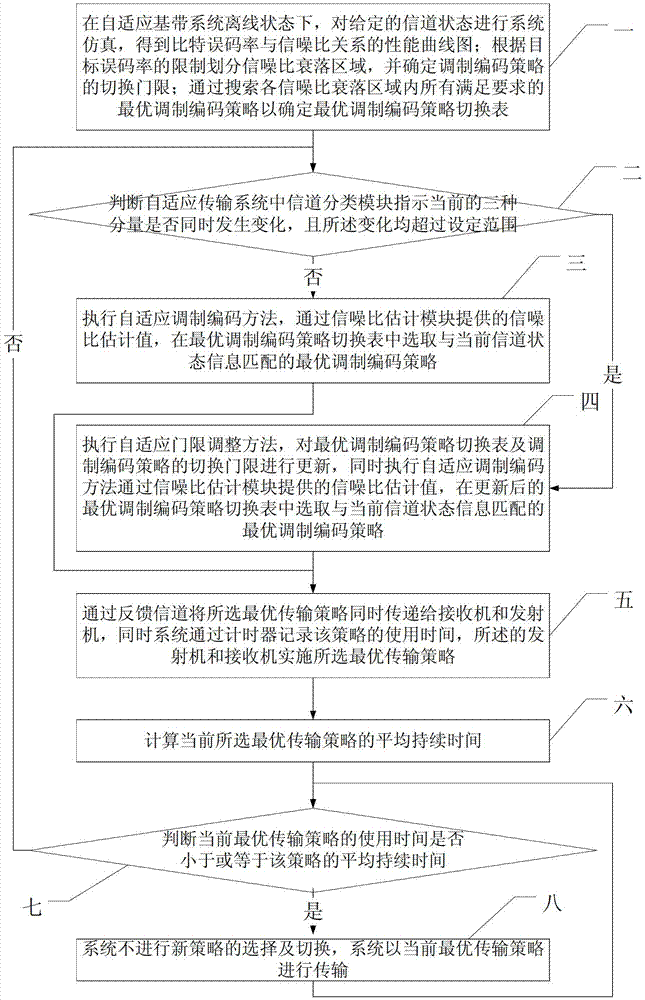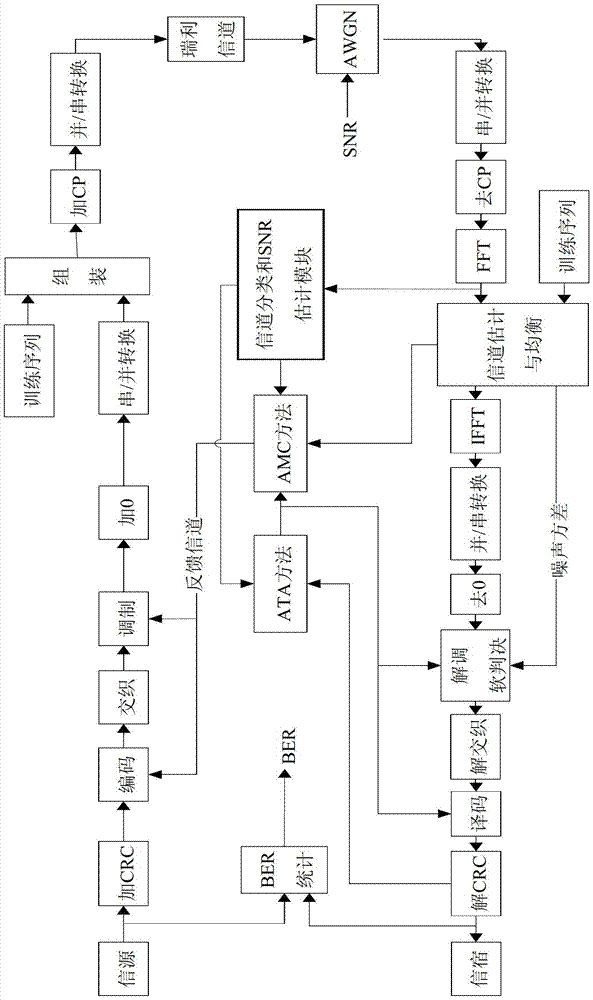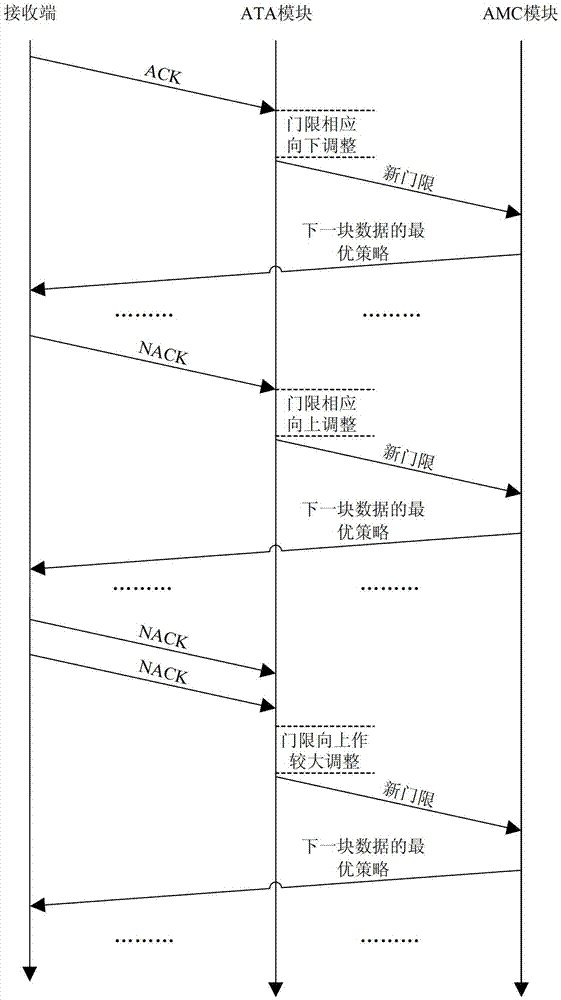A Joint Method of Adaptive Modulation Coding and Adaptive Threshold Adjustment
An adaptive modulation and adaptive threshold technology, applied in digital transmission systems, electrical components, error prevention, etc., can solve problems such as performance degradation, achieve maximum system throughput, improve spectrum efficiency, and solve the effects of significant performance degradation
- Summary
- Abstract
- Description
- Claims
- Application Information
AI Technical Summary
Problems solved by technology
Method used
Image
Examples
specific Embodiment approach 1
[0064] Specific implementation mode one, combination figure 1 Specifically describing this embodiment, the specific operation steps of the joint method of adaptive modulation and coding and adaptive threshold adjustment described in this embodiment are as follows:
[0065] Step 1. In the offline state of the SC-FDE adaptive baseband system, perform system simulation on a given channel state to obtain a performance graph of the relationship between bit error rate and signal-to-noise ratio; according to the target error rate P e The limitation of dividing the signal-to-noise ratio fading area [γ i ,γ i+1 ), and determine the switching threshold of the modulation coding strategy γ i ; By searching for all areas that satisfy P e The required optimal modulation and coding strategy is determined to determine the optimal modulation and coding strategy switching table, the SC-FDE adaptive baseband system is a block transmission system, and step 2 is executed;
[0066] Step 2: Determine wheth...
specific Embodiment approach 2
[0073] Specific embodiment two, the difference between this embodiment and the joint method of adaptive modulation and coding and adaptive threshold adjustment described in specific embodiment one is that the signal-to-noise ratio fading area described in step one [γ i ,γ i+1 ) Is determined by the following method: using the target error rate P e Make a straight line parallel to the horizontal axis in the performance curve of the relationship between the bit error rate and the signal-to-noise ratio, and obtain an intersection point with the performance curve of the relationship between the bit error rate and the signal-to-noise ratio of each strategy. The abscissa corresponding to each intersection is the switching threshold of the transmission strategy γ i , The SNR range between every two thresholds is the SNR fading area [γ i ,γ i+1 ).
specific Embodiment approach 3
[0074] Embodiment 3 The difference between this embodiment and the joint method of adaptive modulation and coding and adaptive threshold adjustment described in Embodiment 1 or 2 is that the step 1 described in step 1 searches for the fading area of each SNR All meet P e The specific process of the required optimal modulation and coding strategy to determine the optimal modulation and coding strategy switching table is:
[0075] Search for all areas that meet the target error rate P in the fading area of the signal-to-noise ratio e The required optimal transmission strategy corresponding to the fading area of the signal-to-noise ratio, the target bit error rate P e The required optimal strategy constitutes an optimal strategy set, and the optimal transmission strategy switching table is determined according to the optimal transmission strategy set.
PUM
 Login to View More
Login to View More Abstract
Description
Claims
Application Information
 Login to View More
Login to View More - R&D
- Intellectual Property
- Life Sciences
- Materials
- Tech Scout
- Unparalleled Data Quality
- Higher Quality Content
- 60% Fewer Hallucinations
Browse by: Latest US Patents, China's latest patents, Technical Efficacy Thesaurus, Application Domain, Technology Topic, Popular Technical Reports.
© 2025 PatSnap. All rights reserved.Legal|Privacy policy|Modern Slavery Act Transparency Statement|Sitemap|About US| Contact US: help@patsnap.com



